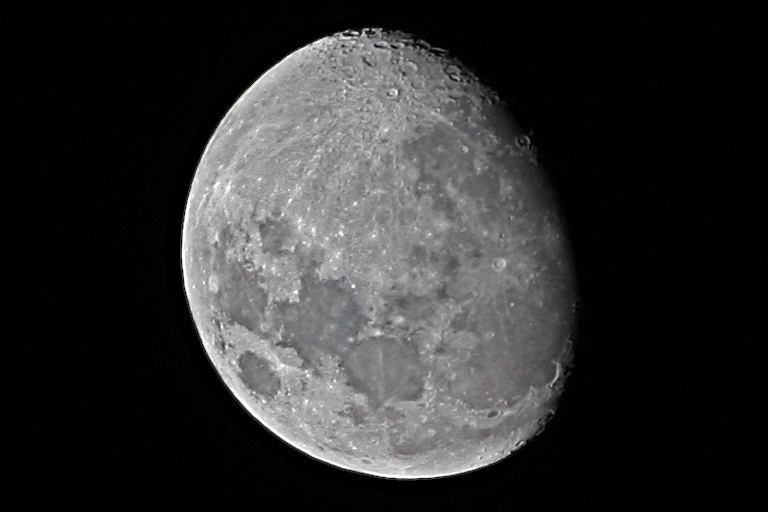You are using an out of date browser. It may not display this or other websites correctly.
You should upgrade or use an alternative browser.
You should upgrade or use an alternative browser.
how to take clear moon shots?
- Thread starter wuminlee
- Start date
- Status
- Not open for further replies.
I like your first shot. Last night I was trying to get the craters, but they werent visible! Wrong side of the moon :/
You will never see the other side of the Moon from the Earth due to the inner structure of the Moon and some gravity.
SilverPine
Senior Member
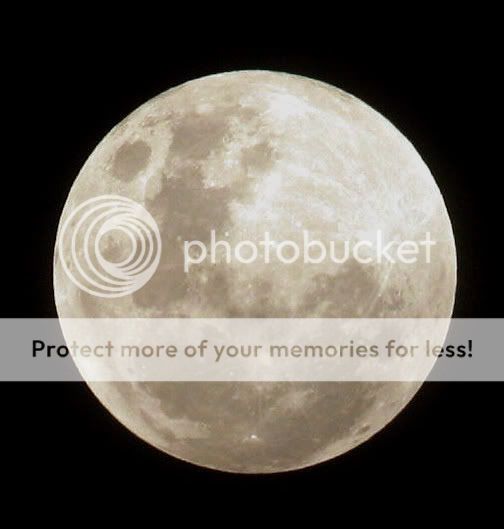
70-200mm f/4.0 TC1.4 ISO 800 f7.1 1/160 sec 200mm with crop. Picture taken on 2009 Feb 09 8:08pm. Must use spot meter, exp -0.7.
Cheers
Last edited:
You need almost 2000mm to get a frame filling shot.
Here are two that I took with 600mm + TCx2 + D80 at different times, nil crop.
http://www.clubsnap.com/forums/showpost.php?p=3851066&postcount=1
http://www.clubsnap.com/forums/showpost.php?p=3856114&postcount=13
Ryan
:thumbsup::thumbsup:
ahbian
Senior Member
I like your first shot. Last night I was trying to get the craters, but they werent visible! Wrong side of the moon :/
Erm, we can only see one side of the moon. Its was actually discussed many moons ago..
pat33
Senior Member
With the 18-200 its a bit difficult to get a large enough image even at 100% crop. I have tried with the 70-300 VR with limited success. As mentioned by others you will probably need about 500mm or more to get a decent image. One of the problems will be camera shake when shooting the moon. I have tried using bicycle hook to secure the camera-scope set up to increase stability. Using mirror lock and a remote to trigger will also help. You can also try using a bean bag.
Here are a 2 shots taken previously and a recent one taken with the camera hooked up to an old Celestron C5 scope with an adapter. This is the equivalent of a 1250mm f10 lens. If you check out some of the old threads in the night photography forum you will find a lot of good info there and a lot of very helpful people. That was where I started.
A night shot of the moon
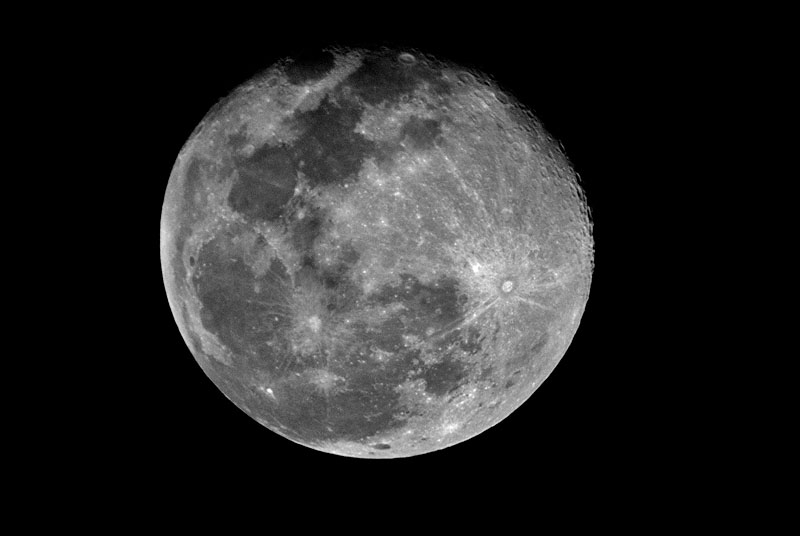
An early evening shot when the moon was rising
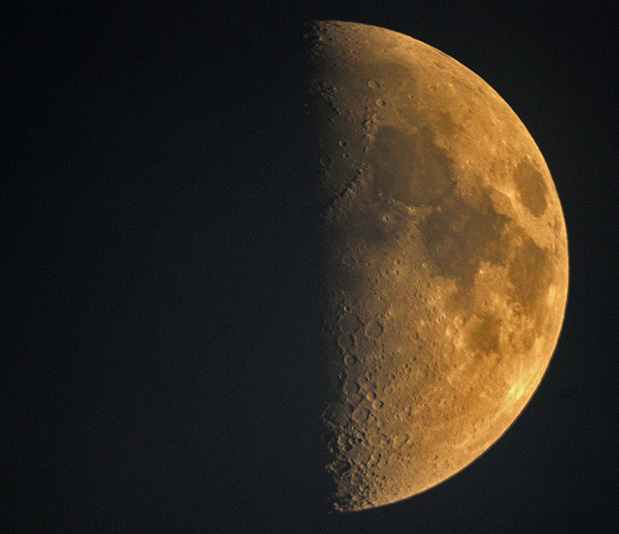
A recent shot this week @ ISO800 1/1250 sec
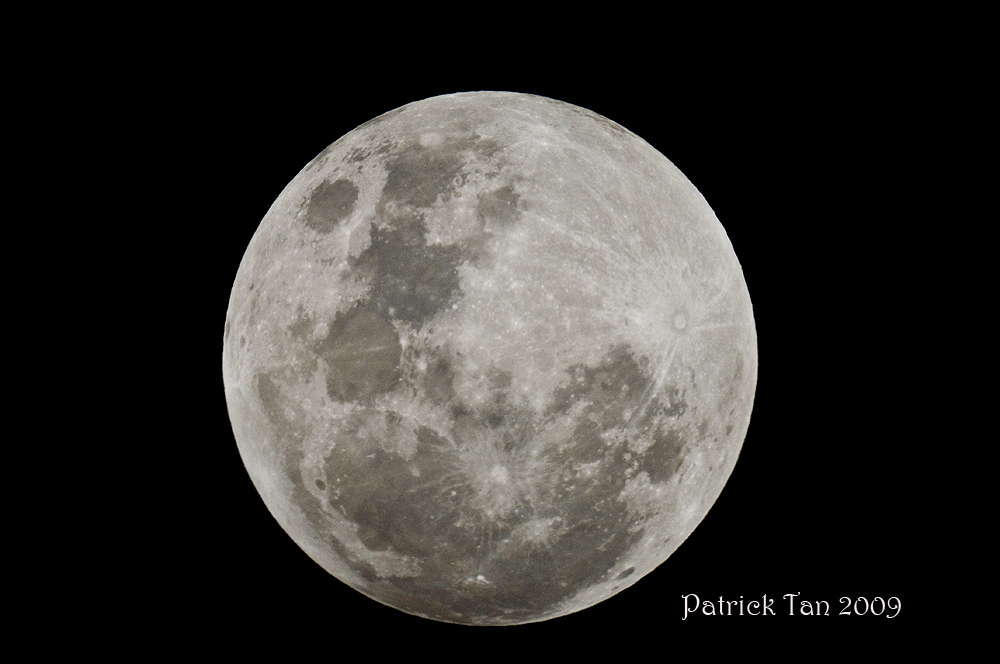
Here are a 2 shots taken previously and a recent one taken with the camera hooked up to an old Celestron C5 scope with an adapter. This is the equivalent of a 1250mm f10 lens. If you check out some of the old threads in the night photography forum you will find a lot of good info there and a lot of very helpful people. That was where I started.
A night shot of the moon

An early evening shot when the moon was rising

A recent shot this week @ ISO800 1/1250 sec

TroyP
New Member
Erm, we can only see one side of the moon. Its was actually discussed many moons ago..
Yeah I know, I looked it up a couple of days ago and saw an animated image of the moon throughout the year. How come some times we can clearly see craters? I did see a bit of craters on 8th Feb (see my pic above), but couldnt on 9th Feb.
Yeah I know, I looked it up a couple of days ago and saw an animated image of the moon throughout the year. How come some times we can clearly see craters? I did see a bit of craters on 8th Feb (see my pic above), but couldnt on 9th Feb.
There's this thing called atmosphere. A complex system of several layers, each having it's own currents, temperature, humidity. Not to mention the pollution in the lower layers.
kitaro9202
Senior Member
for mi my iso is 100 and shutter speed is 1/320 and above
giantcanopy
Senior Member
TroyP, try shooting a half moon / crecent will also probably give you a little more details than a full moon since you will have more side-lighting to illuminate and delineate the surfaces.
Ryan
Ryan
TroyP
New Member
TroyP, try shooting a half moon / crecent will also probably give you a little more details than a full moon since you will have more side-lighting to illuminate and delineate the surfaces.
Ryan
Ok, thanks. I'll give that a go!
NovJoe
Senior Member
Here's my shot using 18-200mm lens. 100% crop and sharpened.
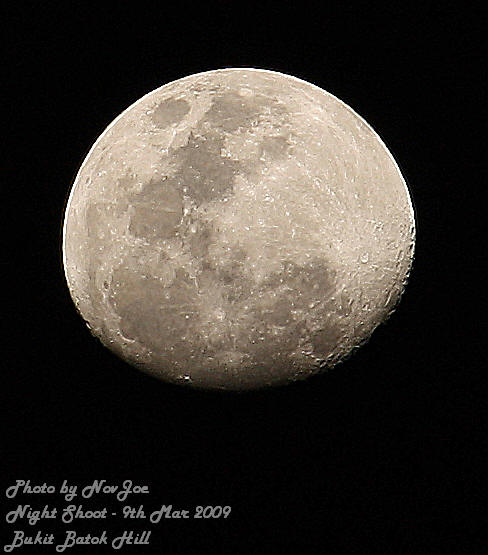
Settings:
F-Nummer: F 10.0
Aperature value: F 9.9
Exposure time: 1/60 sec.
Shutter speed value: 1/64 sec.
Focusal length: 200.0 mm
Exposure program: Manual control
ISO speed rate: ISO-100
Metering mode: Multi-Segment

Settings:
F-Nummer: F 10.0
Aperature value: F 9.9
Exposure time: 1/60 sec.
Shutter speed value: 1/64 sec.
Focusal length: 200.0 mm
Exposure program: Manual control
ISO speed rate: ISO-100
Metering mode: Multi-Segment
Here's my shot using 18-200mm lens. 100% crop and sharpened.

Settings:
F-Nummer: F 10.0
Aperature value: F 9.9
Exposure time: 1/60 sec.
Shutter speed value: 1/64 sec.
Focusal length: 200.0 mm
Exposure program: Manual control
ISO speed rate: ISO-100
Metering mode: Multi-Segment
Not bad at all for the 18-200mm, just take not on the outer white rim u get when u push the post processing...
NovJoe
Senior Member
Not bad at all for the 18-200mm, just take not on the outer white rim u get when u push the post processing...
Thanks deklan!
I'm also very new to PP, and am picking stuffs up here and there myself (trials and errors).
Can guide me how to do it?
Many Thanks in advance!
NovJoe.
- Status
- Not open for further replies.
Similar threads
- Replies
- 0
- Views
- 2K
- Replies
- 0
- Views
- 873
- Replies
- 0
- Views
- 2K
- Replies
- 0
- Views
- 580

